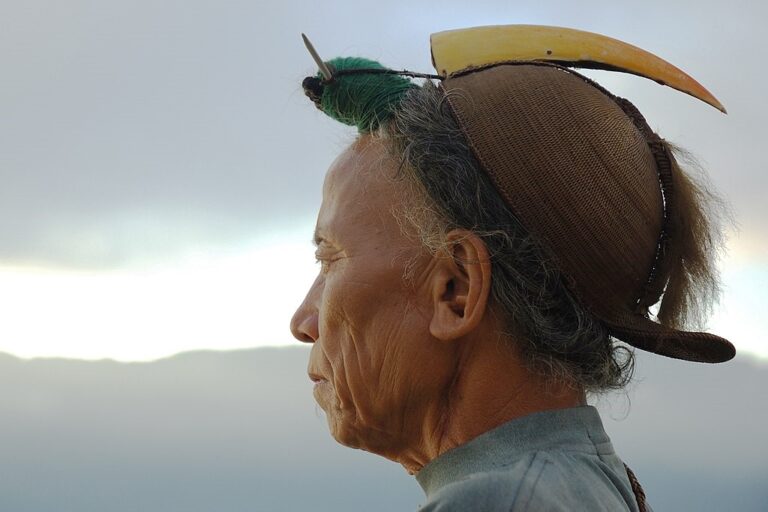Tribal communities have inhabited their ancestral lands for generations, forging deep bonds with the environment. Their lifestyles are intricately woven with the rhythms of nature, and this relationship has led to the development of sustainable practices that minimize ecological impact. There are around 370 million Indigenous People globally. Though they make up only 5 % of the population, they protect around 80% of the Earth’s biodiversity.
At the same time, they face numerous problems like poverty, disease outbreaks, deforestation, land acquisition, and human right violation among others are threatening their chosen way of living. As the world moved toward globalization, indigenous communities continued the path of their ancestors. Today, they are the ones protecting the forest ensuring industrialization and urban development don’t harm what is left of nature.
The effects of destroying nature can be seen all around. Scorching summers, unpredictable monsoons, floods, wildfires, and landslides have become common occurrences. The key to the global climate crisis is understanding biodiversity preservation from people who have lived in harmony with nature for centuries.

The Wealth of Knowledge Possessed by Indigenous People
One of the contributions of tribal communities to wildlife conservation is their possession of traditional ecological knowledge (TEK). Passed down through generations, TEK encompasses a profound understanding of plant and animal behavior, seasonal cycles, and ecosystem dynamics. This knowledge has proven invaluable in monitoring wildlife populations, tracking migratory patterns, and identifying critical habitats.
Tribal elders and community members are often revered as repositories of wisdom, guiding conservationists in understanding the intricate interplay between species and their environment. Such insights have led to the discovery of new species, the documentation of rare flora and fauna, and the formulation of effective conservation strategies. A muscle relaxant was extracted from a plant, curare used traditionally in poison darts.
The fact that ecosystems have remained intact where indigenous people reside is proof enough that the modern world needs to listen and learn from them. The alarm bells of climate change have never been clearer before and it is time to include these communities in our policy-making decisions at local, state, national, and international levels. To reverse the effects of the havoc humans have created, it is time we incorporate the ancient wisdom of the indigenous people and save the only home we know. They are doing their bit, but they can’t do it alone. It is time we recognize that we are in this together and the solution is to work with them.
Sustainable Land Management
Indigenous communities in the Amazon have practiced sustainable land management for centuries, relying on techniques that promote coexistence between humans and nature. Their land-use practices often involve rotational agriculture, agroforestry, and selective hunting and gathering, which contribute to the maintenance of healthy ecosystems.
These communities have honed their abilities to extract resources without causing irreparable damage to the environment. Through carefully curated agricultural practices, they cultivate a diverse array of crops while safeguarding the surrounding rainforest. These sustainable methods offer valuable lessons for modern conservation efforts that seek to balance human needs with ecological preservation.
Indigenous People are the Guardians of Cultural Heritage
For many indigenous communities, the Amazon rainforest is not only a source of physical sustenance but also a repository of cultural heritage and spiritual significance. Their deep spiritual connection to the land fosters a profound sense of responsibility for its protection. Consequently, many indigenous groups have taken on the role of stewards, actively monitoring and guarding their territories against illegal activities.
They often patrol their lands, reporting and deterring activities such as illegal logging, mining, and poaching. Their efforts have proven to be an essential frontline defense against environmental degradation. Furthermore, their presence and advocacy draw attention to the urgent need for rainforest conservation on both local and global scales.
Collaborative Conservation Initiatives
Recognizing the importance of indigenous people in wildlife conservation, governmental and non-governmental organizations have begun forging partnerships with indigenous groups. Collaborative initiatives involve capacity building, education, and the integration of traditional knowledge into modern conservation strategies. These partnerships help ensure that both wildlife and tribal cultures thrive harmoniously.
Conclusion
It is crucial to strike a balance between development and environmental conservation through sustainable and responsible practices. This requires adopting approaches that prioritize long-term ecological health, promote renewable energy sources, support sustainable agriculture, and ensure the protection of natural habitats and biodiversity. Additionally, fostering awareness and education about the interconnectedness of human well-being and a healthy environment is essential to creating a more sustainable future.
It is imperative to acknowledge that indigenous people are not solely victims of the devastation of their lands. They stand as a crucial safeguard for the preservation of the biosphere that sustains us all. Their deep-rooted connection to the land, ethical foundations of leadership, and harmonious interactions with ecosystems offer invaluable lessons that must be embraced and applied. Prioritizing support for Indigenous-led initiatives holds significant weight, as they hold the potential to spearhead swift conservation efforts across both terrestrial and marine environments.
Written by: Soujanya Paddikal
